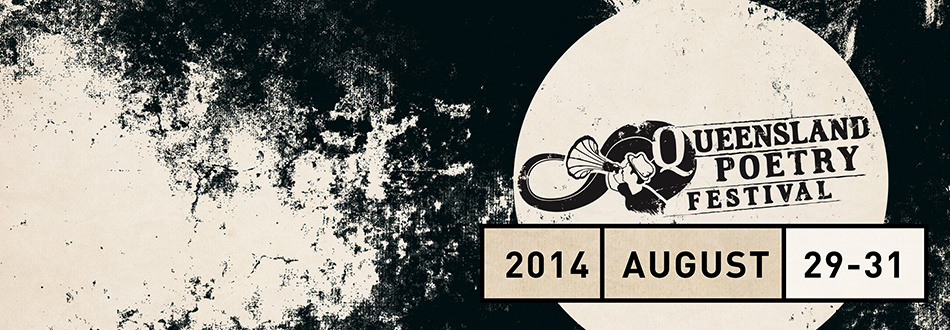
I am of the east coast country
Not from the great cities that play Faust
With flats for souls, but where the Queensland hills
Bite the blue skies with their emerald teeth
And where the sun sets witches fires on the waterline
– Vall Vallis, poet
We came to Queensland over three years ago, our car loaded down with the fixings of our life from down south. We came by road, by multi-lane highway. It was warm when we arrived, blue skies and sunny. I have since learnt that Brisbane is perpetually sunny. We arrived early in the morning and sat on the front steps beneath the stilts leading up to our old wooden Queenslander, drinking cold beers from the bottle.
Welcome to Queensland.
Queensland has long been the punchline for the rest of Australia. Breeding ground of rogue politicians, from Pauline Hanson to Bob Katter, home to the Big Pineapple, playground of colourful characters like Steve Irwin. Brisbane was always the small-town city, not quite as cosmopolitan as Sydney, or as sophisticated as Melbourne.
But is this really Queensland? Dominating the east coast of Australia, and only a stones throw from Papua New Guinea, Queensland is significantly more than Australia’s running joke. The land of theme parks and of GoMA, of tropical storms and desert drought, of isolated outback towns and of all-night Gold Coast clubs. Birthplace of gold medallist Cathy Freeman, and of one of Australia’s greatest poets, David Malouf.
So, what is Queensland?
In search of the answer to that question, Peril and Queensland Poetry Festival invited eight poets – all of whom have a relationship, past or present, with the Sunshine State – to ask themselves what Queensland is, for them. Their poetic responses and accompanying interviews interweave the multiplicity of identities and ideas that exist in being a Queenslander, an Asian-Australian, or none or all of these things at the one time.
Though the poets’ responses differ in tone and style and range across the spectrum from the personal to the political, a few underlying themes provide continuity and speak to the common understandings of what it is to know/be Queensland.
On the personal end of the spectrum is William Yang’s annotated photographic montage, tracking his life from a childhood growing up in outback Queensland towns, leaving, and returning again. Yet despite the personal familial narrative, it speaks to the broader story inherent in being from a place yet not necessarily of that place.
This same sense of cultural straddling is evident in Misbah Khokhar’s Brisbane Dreamscapes, where Pakistan and Queensland overlap and intersect both figuratively and quite literally. The Dreamscapes also evoke a sense of intimacy with Brisbane; the kind of kinship with place borne of an adolescence spent finding oneself in her streets and rives and share houses.
Eleanor Jackson’s ‘Sleepy Town’ evokes a similar sense of intimacy as she speaks of a love affair with Brisbane, drawing the idiosyncrasies of West End, the particularities of Sunnybank. This love affair however becomes muted, distant, in the ‘The State We Are In’, where Eleanor draws out from the personal to question the patina of apathy in Australian city living.
Chris Lynch’s ‘Lantana Dreaming’ goes that next step, drawing a parody of a society in downfall, or perhaps freefall, a kind of dystopia where consumerist society has upended the natural order of things. His collection of haiku, ‘Queen’s Land’, leaves the ironic tone of ‘Lantana Dreaming’ to paint a picture of Queensland that ranges from the personal to the collective, memories of childhood to images instantly recognisable as being of Queensland.
Candy Bowers’ ‘Queensland Yellow’ is similarly suggestive; images spill across the page that immediately conjure up sunshine, Queensland. Yet both of Candy’s poems speak most strongly to the concept of Queensland as a state of contradiction; as a place where cane toads exist alongside cassowaries, racists alongside “blak fullas”, and political conservatism alongside artistic growth.
Queensland as a state of contradiction also undercuts Janaka Malwatta’s ‘Brisbane 2010 – 2013’, where the Queensland conjured up sets sun-baked landscapes alongside shopping strips, aboriginal children alongside Asian pedestrians, and the ubiquitous racist-bearing utes. ‘Road to Chinchilla’ echoes this sense of Queensland being at odds with itself, but this time using Country to form the heart of the poem.
More than the rest of the collections, Stuart Cooke’s poems conjure the physicality of Queensland, of her natural landscapes, her birds and her animals. ‘South-East’ brings the land to life, giving it form and movement while ‘Now’ conjures up a darker Queensland, where the land and the poet exist in unexpected harmony.
Ultimately, this collection of poems and accompanying interviews tells us that Queensland is a state of complexity and contradiction; it is a home and a place to visit, a cultural construct and a physical landscapes. It is many things, for many people. It is also a place where art is alive and well.

